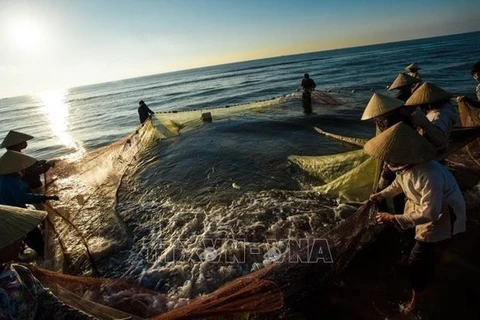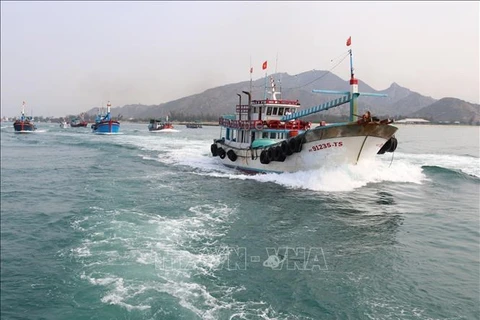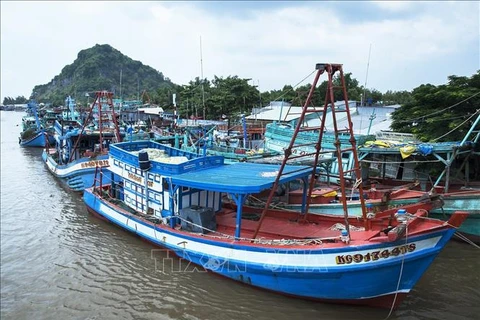 All of the offshore fishing boats measuring at least 15 metres in length have been equipped with monitoring devices. (Photo: VNA)
All of the offshore fishing boats measuring at least 15 metres in length have been equipped with monitoring devices. (Photo: VNA) The “yellow card” imposed by the EC has hindered the development of the domestic fishery sector as well as the country’s seafood processing and export. Therefore, the entire industry is working hard towards the removal of the warning.
The Ministry of Agriculture and Rural Development (MARD) and the aquatic sector have been striving to implement the 2017 Law on Fisheries and combat IUU fishing.
Since the imposition of the “yellow card” warning in 2017, all of the offshore fishing boats measuring at least 15 metres in length have been equipped with monitoring devices.
Many boats that committed violations of regulations have been strictly punished with their operation licences revoked, either temporarily or permanently.
General Secretary of the Vietnam Association of Seafood Exporters and Processors (VASEP) Truong Dinh Hoe said the association has rolled out concerted solutions in an effort to remove the warning, adding that it has coordinated with localities to hold dialogues with fishermen, helping them to remove obstacles in the IUU combat.
According to Hoe, apart from Europe, other markets such as Japan have also imposed the fishing rules, which has posed challenges to domestic businesses.
Given this, the VASEP suggested the ministry invest more in infrastructure at fishing ports, and digitalise the fishery sector, he stressed, explaining that digital data can attest efforts by fishermen and the sector in this regard.
Hoe also emphasised the need to change the mindset of fishermen in the new era – digitalisation – in order to reprieve the fishing ban.
The VASEP has also accompanied the ministry in the communication work to raise public awareness against IUU fishing, he said, adding that the association joins the Department of Agriculture and Rural Development of the Mekong Delta province of Ben Tre to present 1,000 notebooks with relevant contents to local students.
An EC delegation will visit Vietnam at the end of October to inspect the fight of IUU fishing.
Last year, Vietnam earned over 1.4 billion USD from fishery exports to the EU, with 420 million USD from seafood and 980 million USD from aquaculture./.
VNA






















